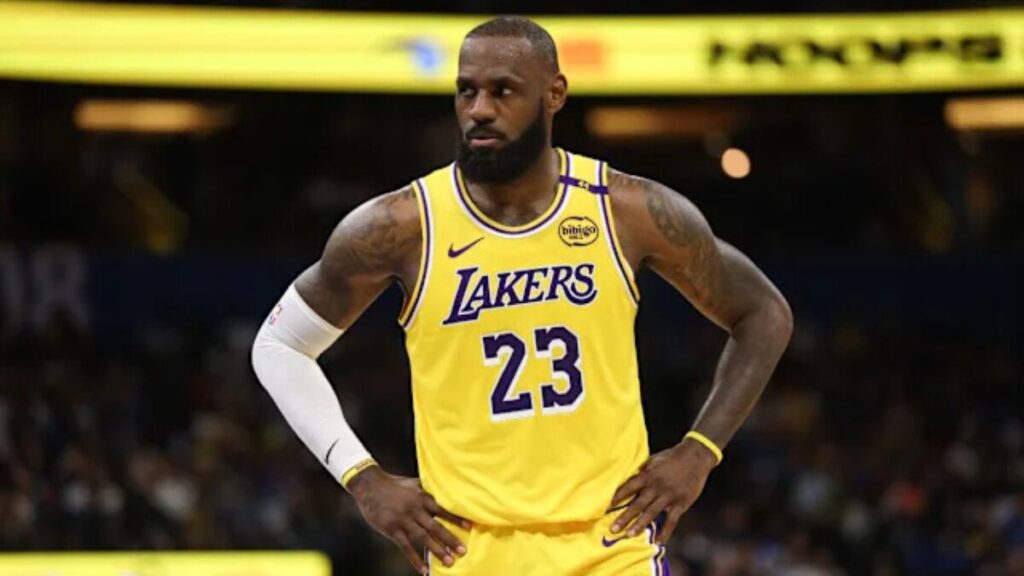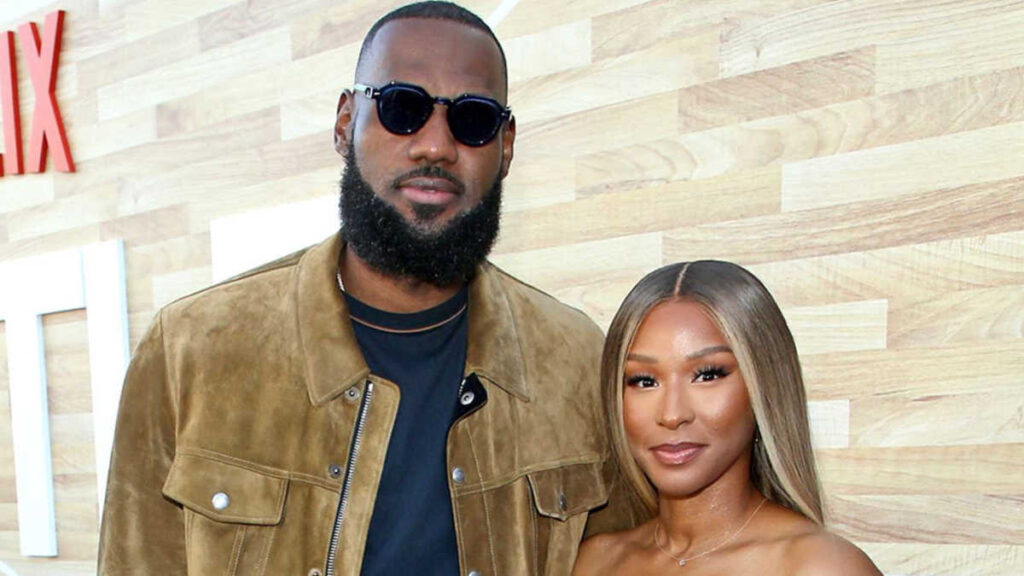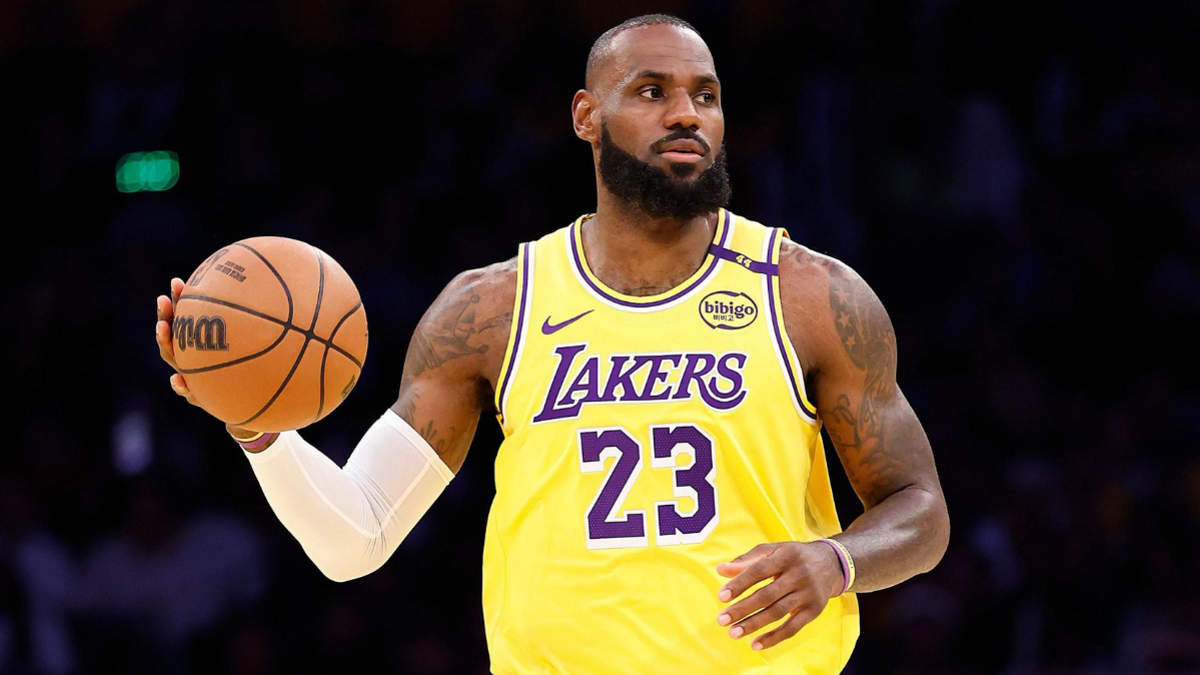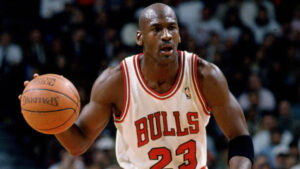Some things are bigger than basketball.” LeBron James uttered those words years ago, but in 2025, they feel truer than ever. At 40 years old, with a historic career behind him and a billion-dollar fortune ahead, LeBron’s name is no longer just etched in NBA record books—it’s inked across the business, media, and cultural landscape.
But why are we still talking about his net worth in 2025?
Because LeBron James has turned the traditional athlete narrative on its head. He didn’t just collect massive paychecks—he reshaped the rules of engagement. From betting on himself with short-term NBA deals to launching a media company that rivals Hollywood studios, LeBron hasn’t simply earned wealth—he’s engineered it.
And unlike many public figures whose financial success feels distant or abstract, LeBron’s empire tells a relatable story: one of strategy, evolution, and intentionality. He’s shown what it looks like to grow in public—on the court, in boardrooms, and on camera—and make every pivot matter.
This isn’t a story about a rich athlete. It’s the blueprint of a modern mogul, and in 2025, the numbers behind his name say less about fame and more about legacy.
LeBron James’ Net Worth in 2025 — The Current Valuation
As of mid-2025, LeBron James’ net worth is estimated at $1.2 billion, according to Forbes and multiple financial analysts. That milestone doesn’t just place him among the rare class of billionaire athletes—it signals the maturation of a 20+ year empire built with surgical precision.
LeBron’s net worth is composed of three major pillars:
- NBA career earnings, totaling over $500 million,
- Endorsements, which contribute an estimated $700 million across brands like Nike, Beats, and Pepsi,
- Equity and business ventures, including SpringHill Company and stakes in Liverpool FC and Fenway Sports Group.
What sets 2025 apart is how much of his valuation now comes from ownership and long-term equity, rather than active playing contracts. In other words, LeBron’s wealth is no longer tied to minutes on the court—it’s been decoupled, diversified, and future-proofed.
Financial experts factor in both realized earnings and the market value of current holdings when calculating their net worth. With SpringHill valued at north of $700 million and potential sports ownership on the horizon, LeBron’s financial ceiling keeps rising.
A visual timeline of his net worth—from rookie days in 2003 to now—would show not just growth, but acceleration. His story isn’t just about income; it’s about architecting scale.
Career Earnings Breakdown — From Rookie Paychecks to $500M+ in Salary
LeBron James didn’t just earn his money—he negotiated it with vision. Over the course of his two-decade NBA career, he has earned more than $500 million in salary alone, making him the highest-paid player in league history by contract earnings. But the real story isn’t just the total—it’s how he got there.
After signing a modest rookie deal with the Cleveland Cavaliers in 2003 (around $18.8 million over four years), LeBron quickly pivoted into a pattern that would redefine athlete autonomy: short-term contracts with maximum flexibility. Rather than lock into long-term deals like many peers, he frequently chose 1+1 or 2+1 structures—contracts that allowed him to opt out early and renegotiate as the NBA salary cap ballooned.
This strategy came into sharp focus during his second stint in Cleveland and early Lakers years. In 2016, he signed a one-year, $23 million deal—unusual for a superstar—but re-upped the next year at a higher rate. By betting on himself and leveraging timing, LeBron consistently ensured he was positioned to take advantage of rising revenues and shifting team dynamics.
Compare this to contemporaries like Steph Curry or Damian Lillard, who took longer-term extensions for stability. LeBron played the game differently—as both athlete and executive. His deal-making mirrored the behavior of a CEO watching market trends, not just a player chasing a ring.
Ultimately, his contract decisions weren’t about maximizing short-term gain—they were about retaining control, and in turn, maximizing power.

The Endorsement Empire — Nike, Beats, and Lifetime Deals
LeBron James’ off-court empire isn’t just lucrative—it’s strategically curated. With endorsement earnings estimated to exceed $700 million over his career, LeBron hasn’t just aligned with brands—he’s become one.
His most iconic partnership is undoubtedly with Nike. Signed as an 18-year-old rookie in 2003 for $90 million, LeBron’s relationship with the swoosh evolved into a lifetime deal reportedly worth over $1 billion—a rarity shared only with a select few. But this deal isn’t just about dollars. It cements LeBron’s place as a permanent cultural symbol, one whose relevance transcends playing years. In his own words: “I want to build something that lasts longer than me.” The LeBron sneaker line now rivals Jordan’s in influence, especially among Gen Z and international markets.
Then there’s Beats by Dre, where LeBron wasn’t just a spokesperson—he was an early equity holder. Before Apple acquired the company in 2014 for $3 billion, LeBron’s quiet ownership netted him an estimated $30 million payout. It was a hint of his evolving playbook: take equity, not just checks.
He’s since partnered with PepsiCo, AT&T, GMC, and Blaze Pizza—brands that reflect innovation, mobility, and cultural relevance. These aren’t random logo alignments; they mirror his ethos of empowerment, performance, and forward motion.
LeBron’s endorsement empire is also notable for what it rejects. He’s walked away from legacy brands when the values didn’t align—Coca-Cola, for example—proving that long-term brand equity matters more than short-term cash.
In 2025, LeBron isn’t just endorsing products. He’s co-creating narratives, shaping industries, and rewriting what it means for athletes to be brand architects—not just ambassadors.
The SpringHill Company — Hollywood, Storytelling, and Media Mogul Moves
LeBron James didn’t just want to be in the spotlight—he wanted to own the stage. That vision came to life with The SpringHill Company, a media conglomerate he co-founded in 2020 alongside longtime business partner Maverick Carter. Named after the Akron apartment complex where LeBron and his mother once lived, SpringHill was built on a mission bigger than content: empowerment through storytelling.
Backed by investors like RedBird Capital, Fenway Sports Group, and even Nike, SpringHill quickly earned credibility—not just as a celebrity vanity project, but as a serious player. In 2021, the company was valued at $725 million, a number that’s only grown since, thanks to high-profile projects like Space Jam: A New Legacy, The Shop on HBO, and a growing slate of scripted and unscripted programming.
What sets SpringHill apart isn’t just the star power—it’s the substance. The company consistently uplifts diverse voices, socially conscious narratives, and underrepresented creators. LeBron’s activist stance—whether on racial justice, education, or political engagement—threads naturally into the company’s DNA. As he once said, “We’re more than athletes,” and SpringHill turns that ethos into a platform with global reach.
Unlike many athlete-backed ventures that fade after a splashy launch, SpringHill thrives on authentic alignment with LeBron’s values. It’s not just business—it’s legacy work. In 2025, LeBron isn’t merely producing content; he’s shaping cultural memory, one story at a time.
Owning a Piece of the Game — Investments in Teams and Sports Businesses
LeBron James has spent his career dominating the court—but increasingly, he’s moved into owning the game itself. In 2021, he became a part-owner of Fenway Sports Group, giving him stakes in iconic franchises like Liverpool FC and the Boston Red Sox. For LeBron, this wasn’t just a financial move—it was a declaration of power in an industry long shaped by ownership dynamics he once had no access to.
This shift from player to stakeholder marks a new phase in LeBron’s financial evolution. As he nears retirement from playing, he’s positioning himself to influence sports from the top down—not just in how games are played, but in how teams are valued, managed, and monetized.
Unlike traditional endorsements or investments, sports ownership offers LeBron a multi-generational asset—one that appreciates in value and solidifies his influence beyond his playing years. While others like Michael Jordan and Serena Williams have ventured into team ownership, LeBron’s approach stands out for its strategic integration with media and branding, giving him control not just over teams, but their storytelling.
In 2025, LeBron isn’t just part of sports history. He’s writing its next chapter—from the boardroom.
Net Worth in Context — How LeBron Stacks Up Against NBA and Global Peers
LeBron James’ net worth in 2025 places him firmly in the rarefied air of billionaire athletes—but within that exclusive club, his fortune isn’t just impressive. It’s distinctively engineered. While others have amassed wealth through generational success or singular brand dominance, LeBron’s path reflects a hybrid strategy: part basketball legend, part corporate architect.
To understand his place in the broader “wealth landscape,” consider a few peers:
| Athlete | Estimated Net Worth (2025) | Primary Wealth Sources |
| LeBron James | $1.2B | NBA salary, endorsements, SpringHill equity |
| Michael Jordan | $3.5B | Jordan Brand royalties, Hornets (sold) equity |
| Tiger Woods | $1.3B | PGA earnings, Nike deal, TGR Ventures |
| Cristiano Ronaldo | $850M | Salary, endorsements, CR7 brand |
| Stephen Curry | $240M | NBA salary, Under Armour, production deals |
| Kevin Durant | $300M | NBA salary, tech investments, Boardroom Media |
What sets LeBron apart isn’t just volume—it’s diversification. Unlike Jordan, who struck gold with one brand juggernaut, or Ronaldo, whose wealth skews commercial, LeBron spreads influence across sports, media, fashion, and equity ownership. His empire has layers, each reinforcing the next.
In this context, LeBron isn’t just among the richest—he represents a modernized blueprint for athlete wealth-building. His fortune mirrors the cultural moment: part media mogul, part CEO, part icon. And in a global field of legends, his portfolio feels not only vast—but intentional.

The Business Mind Behind the Athlete — Strategic Choices That Built a Fortune
LeBron James didn’t stumble into billionaire status—he designed it. Behind the stats and headlines lies a playbook built on foresight, loyalty, and long-game thinking. Central to that strategy? A belief that ownership beats sponsorship and that surrounding yourself with people who see the bigger picture matters more than tradition.
One of LeBron’s most pivotal moves was empowering Maverick Carter, his longtime friend, to lead his business ventures. Rather than entrusting his brand to outside agents, LeBron helped Carter build a company from the ground up—turning friendship into a formidable business partnership.
Then there’s Klutch Sports Group, the agency founded by Rich Paul, another friend from his inner circle. Instead of sticking with legacy agencies that often prioritized their image over the athlete’s, LeBron encouraged Paul to go independent. That move didn’t just change LeBron’s career—it redefined the entire athlete-agent dynamic across the NBA.
Financially, LeBron’s most striking decisions were to take equity in brands like Blaze Pizza, Beats by Dre, and SpringHill rather than just cash endorsements. He invested early, asked hard questions, and took risks where others saw stability.
Every step—leaving Cleveland, forming superteams, joining the Lakers—was about more than basketball. They were narrative choices, setting the stage for business ventures, media positioning, and long-term relevance.
In LeBron’s world, the game didn’t stop at the buzzer. It simply shifted arenas. And in every new space—whether boardroom or broadcast—he showed up not just to participate, but to own the outcome.
Watching LeBron Build His Empire Up Close
I remember the first time I interviewed LeBron James. It was 2006—he was barely 21, already a superstar, yet still signing sneakers for every kid in the hallway after practice. Back then, I thought I was covering a basketball phenom. I didn’t realize I was watching the early chapters of a global empire being written in real time.
What’s always struck me isn’t just LeBron’s discipline on the court—it’s his clarity off it. There was a moment in 2010, shortly after “The Decision,” when I overheard him talking not about points or playoffs, but about producing documentaries, building schools, and—this caught me off guard—“changing what legacy looks like for people who look like me.”
He said it quietly, almost offhand. But he meant it.
Over the years, I’ve seen him bypass easy deals for longer-term equity, champion friends instead of big-name executives, and turn criticism into calculated leverage. He’s not just building wealth—he’s architecting a model for what power can look like when it’s earned, shared, and deeply intentional.
Watching him evolve from a high school prodigy to a cultural institution has been more than a front-row seat—it’s been a masterclass in how greatness grows when it refuses to stay in one lane.
What’s Next? LeBron’s 2025 and Beyond Wealth Trajectory
At 40, LeBron James has nothing left to prove on the court—but off it, his next chapter may be his most ambitious yet.
One move feels almost inevitable: NBA ownership. LeBron has openly stated his desire to own a team—“preferably in Vegas,” he once hinted. With league expansion on the horizon and his deep ties to Fenway Sports Group, the timing couldn’t be more aligned. Becoming the first Black majority owner of an NBA team would be both historic and fitting.
Then there’s SpringHill, which seems poised for global expansion. Already a force in media, the company could easily evolve into a multi-vertical content and brand studio—think A24 meets Roc Nation—with reach across fashion, digital, and tech storytelling. International partnerships and education-based content could be SpringHill’s next frontier.
Some insiders also speculate that LeBron may launch a private equity or venture capital fund, focused on empowering minority entrepreneurs—another natural extension of his legacy-first mindset.
What’s certain is this: LeBron is shifting from wealth builder to wealth multiplier. And in doing so, he’s not just redefining retirement—he’s reshaping the playbook for how athletes, especially Black athletes, can wield long-term influence.
The game might be ending for #23, but the empire? That’s just tipping off.
LeBron’s Legacy Is Written in Billion-Dollar Moves
LeBron James’ net worth in 2025 is more than a financial headline—it’s a living ledger of vision, ownership, and generational leadership. From a teenage phenom in Akron to a billion-dollar brand with global reach, his journey redefines what success looks like for modern athletes.
This isn’t just about being rich. It’s about being intentional—choosing equity over quick checks, building platforms over products, and turning fame into enduring influence.
LeBron didn’t follow a blueprint. He created one—where athletes are storytellers, investors, and power brokers on their terms.
As the final buzzer approaches on his playing career, the real question isn’t what he’s accomplished—but what his legacy will inspire. How many will study his moves, not just for the highlight reels, but for the blueprint he left behind?
Because if LeBron taught us anything, it’s this: greatness isn’t just played—it’s built.
Nishant is a digital strategist and celebrity finance analyst with over 15 years of experience in SEO-driven content. As Founder of TheNetWorths.com, he creates high-authority profiles on wealth, branding, and cultural influence.

















6 thoughts on “LeBron James Net Worth 2025: How He Built a $1.2 Billion Fortune On and Off the Court”